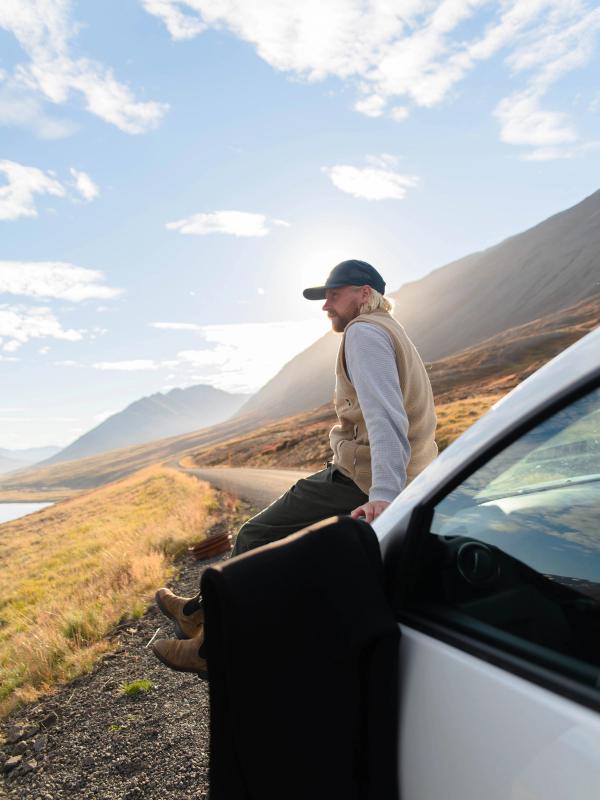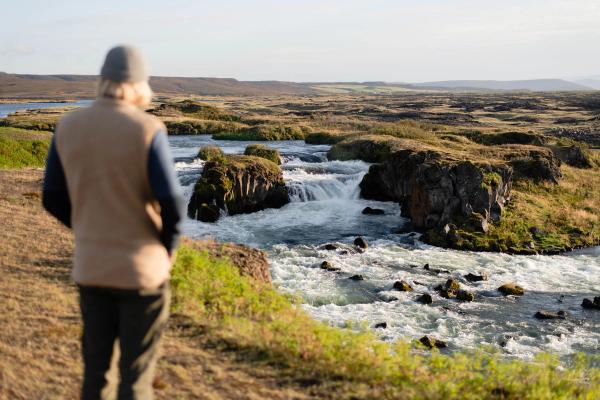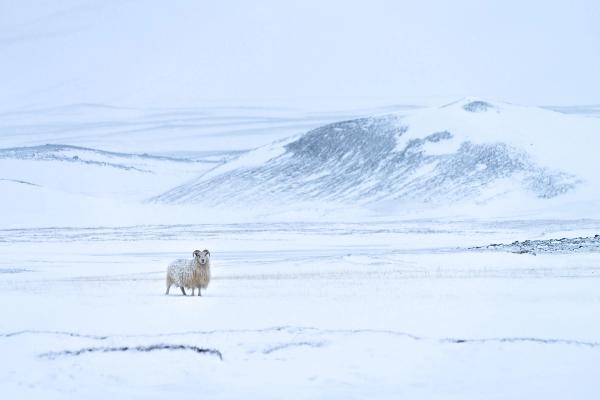
Is Iceland Cold? Prepare for Your Arctic Adventure
Iceland is known as the land of Fire and Ice, which could cause some confusion regarding the weather.
But don’t worry—we are here to help you navigate Iceland’s temperatures. First, location is key to why the island has colder weather than other countries.
Key Takeaways
- While Iceland can be chilly, especially in winter, it's not freezing year-round, and summers are surprisingly mild.
- Iceland's northern location, wind, and weather patterns contribute to its cold weather, but the ocean's warm currents help keep temperatures milder than expected.
- In colder spots like the north or Highlands, wear warm layers; milder areas need less, but it's good to be ready for weather changes.
So, How Cold is Iceland?
Wondering how cold Iceland really is? Despite its chilly name, Iceland isn't as freezing as you might think. Thanks to the warm currents of the Gulf Stream, the climate is milder than in many other places at the same latitude. In the summer months (June to August), temperatures are quite pleasant, usually ranging between 50°F and 59°F (10°C to 15°C). Occasionally, it can even reach up to 77°F (25°C), which is a real treat! So, during the summer, it's cool but comfortable—perfect for exploring the outdoors without getting too hot or cold.
In the winter (December to February), it does get cold, but not unbearably so. Average temperatures hover around 30°F (-1°C), and while that's definitely chilly, it's warmer than you might expect for a country so far north. Snow is common during these months, giving the landscape a beautiful, wintry look. Plus, the colder weather brings the added bonus of being able to see the Northern Lights. So, while you'll need to bundle up, Iceland's cold isn't extreme, and with the right clothing, you can enjoy everything this amazing country has to offer year-round.

What Makes Iceland Cold?
So, why does Iceland get cold in the first place? It's not just because it's near the Arctic Circle. Let's check out the main reasons behind Iceland's chilly weather.
Where It Is on the Map
Iceland is located pretty far north, close to the Arctic Circle. Being up this high on the map means it’s going to be colder than many places around the world. But, believe it or not, it’s not as icy as you’d expect, and that's because of a few things that help keep it from turning into a deep freeze.
The Ocean Helps Out
One of the biggest reasons Iceland isn’t as cold as people think is the ocean. There's a warm ocean current called the North Atlantic Current that brings warmer water from the Gulf of Mexico. This helps keep the coasts, where most people live, warmer than you’d expect for a country so far north.
The Wind Can Make It Feel Colder
Iceland is known for being windy. This wind can make it feel a lot colder than it really is. Because Iceland is right in the middle of some major weather systems, you can get hit with strong gusts of wind that make a chilly day feel freezing. So, while the temperature might not be super low, the wind makes a big difference.
Is It Always Cold in Iceland?
Iceland isn't always cold. The weather changes a lot depending on the season, so how cold it gets depends on when you visit.
Winter
In the winter, which lasts from December to February, temperatures in places like Reykjavík usually stay between -1°C and 4°C (30°F to 39°F). It can get colder up north or in the highlands, sometimes dropping below -10°C (14°F). Snow and ice are common, but it’s not like you’re facing temperatures that are way below freezing all the time.
Summer
In summer, from June to August, it’s much milder. Temperatures usually sit between 10°C and 15°C (50°F to 59°F), and sometimes it even gets up to 20°C (68°F). Plus, during this time, there’s almost 24 hours of daylight, which makes it feel warmer than it really is.
The Weather Can Change Fast
No matter what time of year it is, the weather in Iceland is unpredictable. You might start the day with sunshine, only to see rain or even snow by the afternoon. This kind of changeable weather is something to be ready for, no matter when you’re visiting.

Iceland’s Coldest Places vs. Warmest Places
For a relatively small country, the temperature in Iceland varies a lot from one region to the other.
The Cold Spots
If you head up north to places like Akureyri or the Westfjords, it’s going to feel a lot colder than down south. These areas don’t get as much of the ocean’s warming effect, and the Arctic winds make them feel chillier. The Highlands, which are higher up, also stay cold, especially in the winter with lots of snow.
Milder Areas
In contrast, Reykjavík and the southern coast are warmer. Thanks to the ocean, these places have milder winters, and the temperatures stay more stable year-round. If you’re looking for the warmest spot, the south is where you want to be.
What Does Cold Feel Like in Iceland?
One thing visitors often notice is that Iceland’s cold feels different than in other places. It’s not as harsh as the cold you get in really dry, snowy places like Minnesota or Moscow. In Iceland, it’s often a damp kind of cold, and the wind can make it feel even colder. So, even though the temperatures might not be super low, it can still feel pretty cold because of the wind and wet air.
Locals vs. Tourists
Locals are used to the cold and know how to dress for it. Tourists, especially those from warmer places, might find it tougher to handle at first. But with the right clothes and a little preparation, it’s not that hard to get used to the chill.

How Do Icelanders Handle the Cold?
Dealing with cold weather is just part of everyday life for people in Iceland, and we've found smart ways to cope with it. Wondering how we stay warm and keep things going when it's chilly outside? Let's see how the locals handle the cold.
Warm Homes
One of the great things about living in Iceland is geothermal heating. Almost all the homes are heated using natural hot water from the ground, so even on the coldest days, it’s warm and cozy inside. This makes a big difference when you're coming in from the cold.
Layering Clothes
Icelanders know the secret to staying warm is layering. Wool sweaters, waterproof jackets, and thermal underwear are all part of the everyday wardrobe. The traditional Icelandic wool sweater, called a lopapeysa, is popular for a reason—it’s warm, comfortable, and perfect for Iceland’s chilly weather.
Cold Weather Fun
Instead of staying inside during the cold months, Icelanders get outside and enjoy the winter. There are plenty of fun things to do, like ice caving, glacier hikes, skiing, and snowmobiling. And, of course, the cold weather also brings the Northern Lights, which are best seen in the long, dark winter nights.
Do You Need to Prepare for the Cold When Visiting?
Planning a trip to Iceland and wondering if you need to get ready for the cold? Let's talk about what you should pack and how to prepare so you can stay warm and enjoy your adventure.
Packing the Right Clothes
If you’re planning a trip to Iceland, it’s a good idea to pack for the cold, even if you’re visiting in summer. Here are a few tips:
- Dress in Layers. That way, you can add or remove clothes depending on how cold it is.
- Waterproof Gear: Since it can rain or snow at any time, having a good waterproof jacket and boots is key.
- Warm Shoes: Wear sturdy, insulated shoes or boots to keep your feet warm and dry.
Stay Updated on the Weather
Because the weather can change quickly, it’s smart to check the forecast regularly. Knowing what’s coming will help you stay one step ahead and make sure you’re dressed for whatever Iceland throws your way.

Extreme Weather
What about extreme weather? Iceland is not prominent to anything too extreme, but we will break down what you can expect in a rare occurrence. Tornadoes are not common in Iceland, yet waterspouts have been seen over the years. A water spout is a tornado or funnel cloud that occurs over the ocean or a large body of water. The best part is that they normally stay out in the ocean. Leaving nothing to worry about for those of us on land.
Earthquakes in Iceland are considered normal, along with the rest of the world. While there are about 500 that happen weekly, almost all are unnoticeable. Big earthquakes that shake the ground and cause damage are very rare. The largest earthquake that was recorded in Iceland happened in 1784 at a 7.1 magnitude. Since then, no other earthquakes have been as intense.
When a large earthquake happens, a Tsunami can follow. Which is a ginormous and terrifying tidal wave. Fourntenly, Iceland is not located in a Tsunami Zone. Scientists say there is only a 2% chance that a Tsunami could hit Iceland over the next fifty years.
Since Iceland is an island, are hurricanes a threat? They can be, but not the kind you see hit the Caribbean Islands. On September 1st, 2014, Hurricane Cristobal did reach Iceland. Since it was near the end of the storm, just heavy winds and rain were carried over. Basically, Iceland will not get a new hurricane fresh off the coast due to its cooler weather. But there is always a chance a powerful storm could reach the small island towards the end of its wrath.
You also need to keep an eye out for ash and sand storms when traveling through the country. Around 20% of Iceland is covered in ash that was left over from volcanic eruptions in the past. If heavy winds hit the area, this ash can cause damage to your car. It is also very dangerous to drive through since it will be nearly impossible to see. Make sure to pull over and stay safe until the storm has passed through. High winds can also pick up sand, especially in the South Coast Area. If you are near the coast and heavy winds are in the forecast, go slow and be aware of your surroundings. Sand and Ash can cause damage to your rental car. You always want to make sure to add Sand and Ash Insurance to your car rental, in case a situation like this occurs.
Blizzards are the most common type of extreme weather in Iceland. This happens when strong winds are in the forecast, in combination with heavy snowfall. This causes downed power lines and white-out driving or walking conditions. Blizzards in Iceland are no joke. In 2019 the country saw up to 149 mph winds, with over 10 feet of snow accumulating in the mountains. If you are visiting Iceland when a blizzard is in the forecast, it is best to stay put. This is definitely the time to stay inside and nestle up with that book you’ve been dying to read.
Iceland’s Worst Storm
In 2015, Iceland was hit with the first-ever named Icelandic storm, Diddú. It was rumored to be the worst storm that has hit Iceland in 25 years! It brought heavy snowfall and hurricane-force winds to the small island. Why did this happen? An extreme arctic depression brought heavy amounts of precipitation to Iceland. This combined with the very strong winds was a recipe for disaster,
East Iceland reported wind gusts going over 160 MPH. With the Westfjords area reporting winds hitting 96 MPH. South Iceland and the Westman islands seemed to be the areas that got the most damage. The winds were so strong the roofs of houses were blown right off. Boats in the area were simply gone as they went completely airborne. Thankfully no one was hurt during this storm, just a lot of heavy cleanup after it ended.
We could not find a video of that storm, but here is another one from 2012 captured in Reykjavik:
The Future Of Iceland’s Weather
What does Iceland’s future hold when it comes to its climate? Climate change could have an effect on Iceland’s temperatures over the next decade, thanks to Greenland. The ice sheet in the country is now melting, which is making Iceland colder. So how could this happen? The constant melting of ice is making the North Atlantic Ocean even colder. Since colder temperatures slow a Gulf Stream, the warm water from the Gulf of Mexico will no longer make it to Iceland. If this does continue over time, Iceland and Greenland could switch climates. This would be a full-circle story for the Greenland and Iceland name controversy. Scientists are predicting this would happen in the next hundred years, if at all.
Conclusion
So, is Iceland cold? The answer is both yes and no. While it can get pretty chilly—especially in the winter—it's not freezing all the time. Summers are mild and even pleasantly cool, and some areas like Reykjavík and the southern coast are warmer thanks to the ocean's influence. The northern and inland regions are colder, but with the right clothing and a little planning, you can handle it just fine. Iceland's weather is part of what makes it unique and exciting. So don't let the name scare you off—with some preparation, you'll be all set to enjoy everything this amazing country has to offer, no matter the season.
